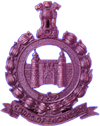Related Research Articles

The Tatmadaw is the military of Myanmar. It is administered by the Ministry of Defence and composed of the Myanmar Army, the Myanmar Navy and the Myanmar Air Force. Auxiliary services include the Myanmar Police Force, the Border Guard Forces, the Myanmar Coast Guard, and the People's Militia Units. Since independence, the Tatmadaw has faced significant ethnic insurgencies, especially in Chin, Kachin, Kayin, Kayah, and Shan states. General Ne Win took control of the country in a 1962 coup d'état, attempting to build an autarkic society called the Burmese Way to Socialism. Following the violent repression of nationwide protests in 1988, the military agreed to free elections in 1990, but ignored the resulting victory of the National League for Democracy and imprisoned its leader Aung San Suu Kyi. The 1990s also saw the escalation of the conflict between Buddhists and Rohingya Muslims in Rakhine State due to RSO attacks on Tatmadaw forces.

Military ranks are a system of hierarchical relationships, within armed forces, police, intelligence agencies or other institutions organized along military lines. The military rank system defines dominance, authority, and responsibility in a military hierarchy. It incorporates the principles of exercising power and authority into the military chain of command—the succession of commanders superior to subordinates through which command is exercised. The military chain of command constructs an important component for organized collective action.

A regiment is a military unit. Its role and size varies markedly, depending on the country, service and/or a specialisation.

A brigade is a major tactical military formation that typically comprises three to six battalions plus supporting elements. It is roughly equivalent to an enlarged or reinforced regiment. Two or more brigades may constitute a division.
The British Expeditionary Force (BEF) was the six-divisions the British Army sent to the Western Front during the First World War. Planning for a British Expeditionary Force began with the 1906–1912 Haldane reforms of the British Army carried out by the Secretary of State for War Richard Haldane following the Second Boer War (1899–1902).

The Indian Army is the land-based branch and the largest component of the Indian Armed Forces. The President of India is the Supreme Commander of the Indian Army, and its professional head is the Chief of Army Staff (COAS), who is a four-star general. Two officers have been conferred with the rank of field marshal, a five-star rank, which is a ceremonial position of great honour. The Indian Army was formed in 1895 alongside the long established presidency armies of the East India Company, which too were absorbed into it in 1903. The princely states had their own armies, which were merged into the national army after independence. The units and regiments of the Indian Army have diverse histories and have participated in several battles and campaigns around the world, earning many battle and theatre honours before and after Independence.

The British Indian Army, commonly referred to as the Indian Army, was the main military of the British Raj before its dissolution in 1947. It was responsible for the defence of the British Indian Empire, including the princely states, which could also have their own armies. As quoted in the Imperial Gazetteer of India, "The British Government has undertaken to protect the dominions of the Native princes from invasion and even from rebellion within: its army is organized for the defence not merely of British India, but of all possessions under the suzerainty of the King-Emperor." The Indian Army was an important part of the British Empire's forces, both in India and abroad, particularly during the First World War and the Second World War.
Following the Kitchener Reforms of 1903 during the British Raj, the Commander-in-Chief, India, enjoyed control of the Army of India and answered to the civilian Viceroy of India. The Commander-in-Chief's staff was overseen by the Chief of the General Staff. General Headquarters India was based in Calcutta and Simla until the seat of power moved to New Delhi in 1911.

The history of the British Army spans over three and a half centuries since its founding in 1660 and involves numerous European wars, colonial wars and world wars. From the late 17th century until the mid-20th century, the United Kingdom was the greatest economic and imperial power in the world, and although this dominance was principally achieved through the strength of the Royal Navy (RN), the British Army played a significant role.

Military organization or military organisation is the structuring of the armed forces of a state so as to offer such military capability as a national defense policy may require. In some countries paramilitary forces are included in a nation's armed forces, though not considered military. Armed forces that are not a part of military or paramilitary organizations, such as insurgent forces, often mimic military organizations, or use ad hoc structures, while formal military organization tends to use hierarchical forms.

The Indian Army was involved in World War I as part of the British Empire. Over one million Indian troops served overseas, of whom 62,000 died and another 67,000 were wounded. In total at least 74,187 Indian soldiers died during the war.

The Indian Army Corps of Engineers is a combat support arm which provides combat engineering support, develops infrastructure for armed forces and other defence organisations and maintains connectivity along the borders, besides helping the civil authorities during natural disasters. College of Military Engineering, Pune (CME) is the premier technical and tactical training institution of the Indian Army Corps of Engineers.
The First Indian National Army was the Indian National Army as it existed between February and December 1942. It was formed with Japanese aid and support after the Fall of Singapore and consisted of approximately 12,000 of the 40,000 Indian prisoners of war who were captured either during the Malayan campaign or surrendered at Singapore and was led by Rash Behari Bose of Japan. It was formally proclaimed in April 1942 and declared the subordinate military wing of the Indian Independence League in June that year. The unit was dissolved in December 1942 after apprehensions of Japanese motives with regards to the INA led to disagreements and distrust between Mohan Singh and INA leadership on one hand, and the League's leadership, most notably Rash Behari Bose, who handed over the Indian National Army to Subhas Chandra Bose but remained as Supreme Advisor to INA. A large number of the INAs initial volunteers, however, later went on to join the INA in its second incarnation under Subhas Chandra Bose.
The 9th (Secunderabad) Division was an infantry division formation of the British Indian Army. It was part of the Southern Army and was formed in 1904 after Lord Kitchener was appointed Commander-in-Chief, India between 1902 and 1909. He instituted large-scale reforms, including merging the three armies of the Presidencies into a unified force and forming higher level formations, eight army divisions, and brigading Indian and British units. Following Kitchener's reforms, the British Indian Army became "the force recruited locally and permanently based in India, together with its expatriate British officers."
The 5th (Mhow) Division was a regular division of the British Indian Army and part of the Southern Army which was formed in 1903 after Lord Kitchener was appointed Commander-in-Chief, India between 1902 and 1909. He instituted large-scale reforms, including merging the three armies of the Presidencies into a unified force and forming higher level formations, eight army divisions, and brigading Indian and British units. Following Kitchener's reforms, the British Indian Army was "the force recruited locally and permanently based in India, together with its expatriate British officers."

The Haldane Reforms were a series of far-ranging reforms of the British Army made from 1906 to 1912, and named after the Secretary of State for War, Richard Burdon Haldane. They were the first major reforms since the "Childers Reforms" of the early 1880s, and were made in the light of lessons newly learned in the Second Boer War.

The British Army during the Victorian era served through a period of great technological and social change. Queen Victoria ascended the throne in 1837, and died in 1901. Her long reign was marked by the steady expansion and consolidation of the British Empire, rapid industrialisation and the enactment of liberal reforms by both Liberal and Conservative governments within Britain.
The Lucknow Cavalry Brigade was a cavalry brigade of the British Indian Army formed in 1911 as a result of the Kitchener Reforms. It was mobilized as 8th (Lucknow) Cavalry Brigade at the outbreak of the First World War as part of the 1st Indian Cavalry Division and departed for France. It served on the Western Front with the division until it was broken up in March 1918.
The Bangalore Brigade was an infantry brigade of the British Indian Army formed in 1904 as a result of the Kitchener Reforms. It was mobilized as 27th (Bangalore) Brigade at the outbreak of the First World War. As part of Indian Expeditionary Force B, it was sent to assault Tanga in German East Africa. With the failure of the Battle of Tanga, its units joined the defences of British East Africa and it was broken up.
The Lucknow Brigade was an infantry brigade of the British Indian Army formed in 1907 as a result of the Kitchener Reforms. It was mobilized as 22nd (Lucknow) Brigade at the outbreak of the First World War as part of Indian Expeditionary Force E. It served in Egypt in 1915 before being broken up in January 1916.
References
Patti, Archimedes L. A. (1980). Why Viet Nam?: Prelude to America's albatross (illustrated ed.). University of California Press. p. 11. ISBN 0-520-04156-9.